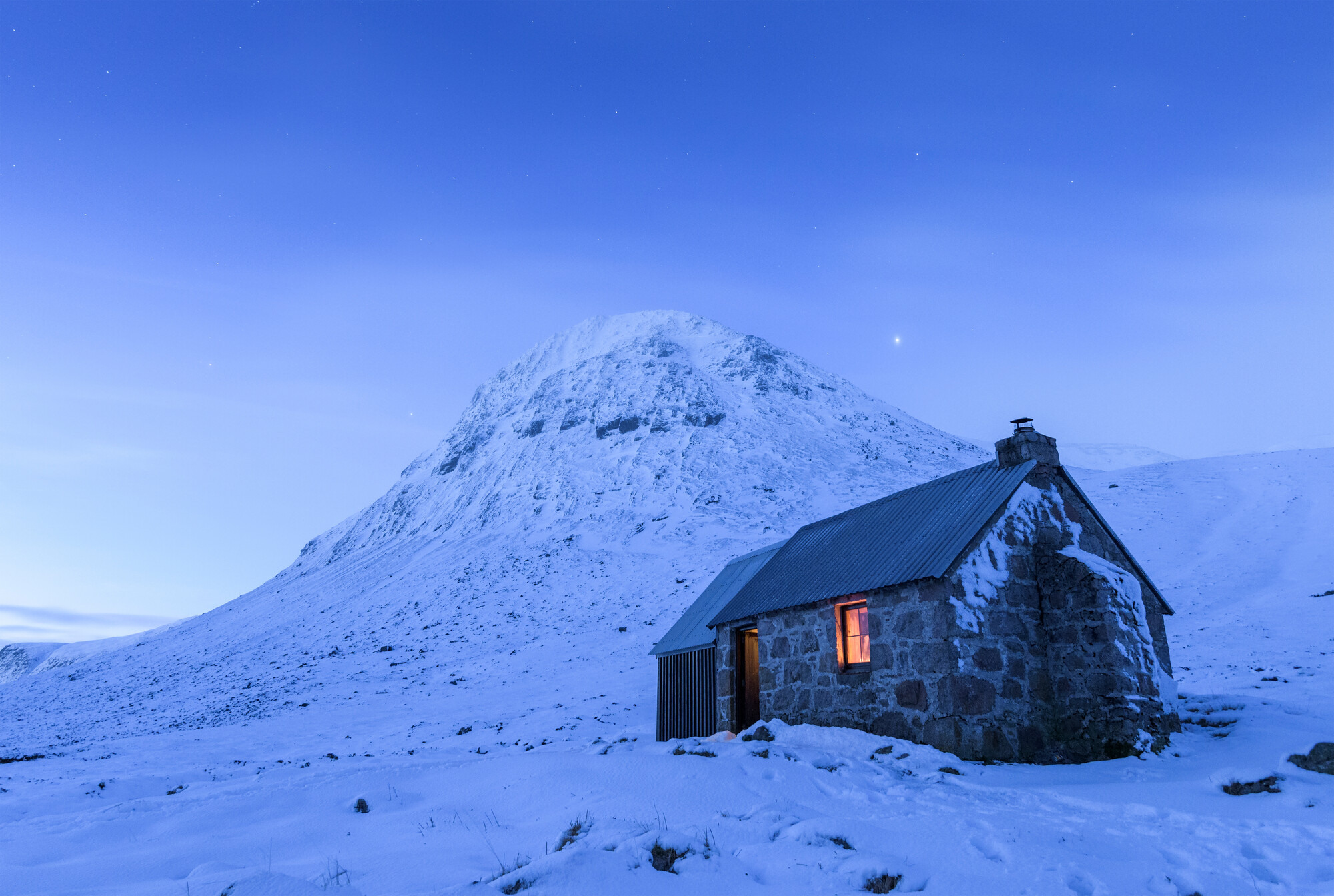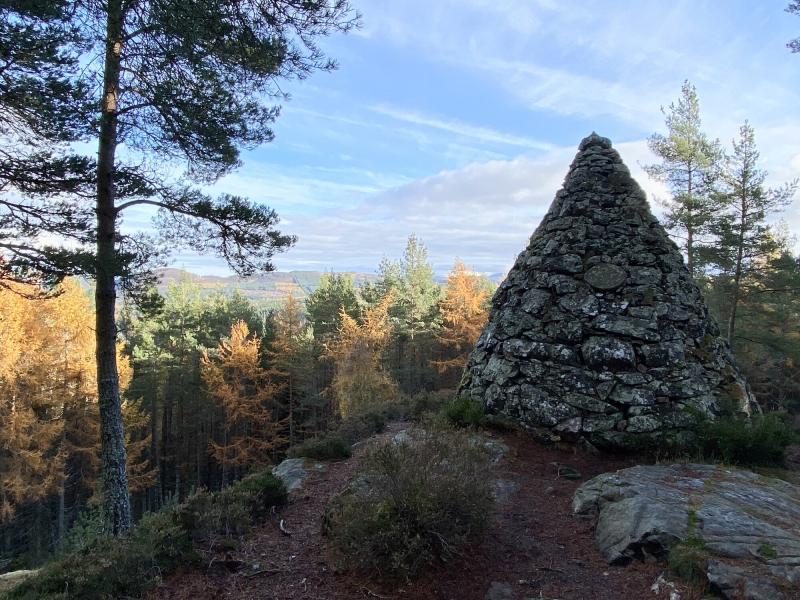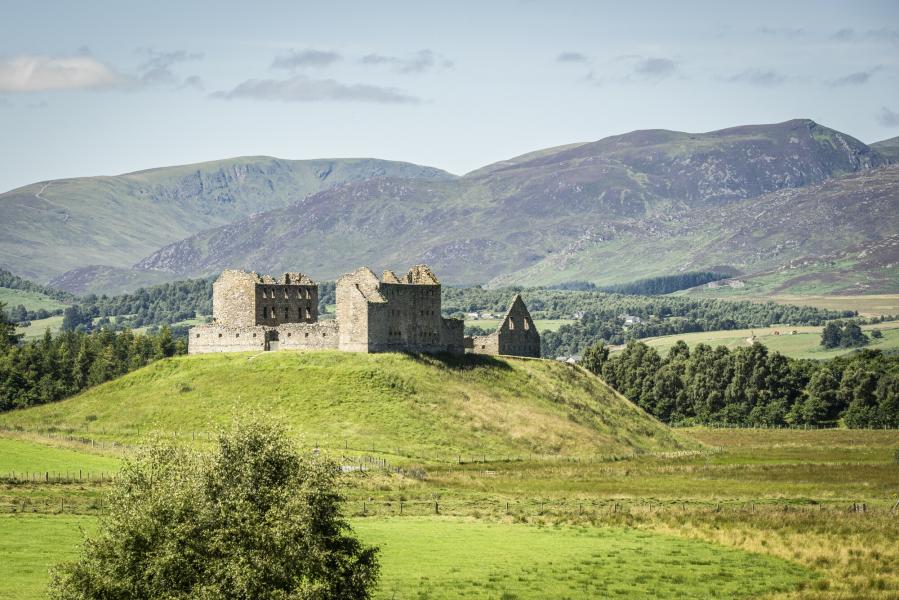History

While the Cairngorms National Park was established in 2003, the area's rich history spans centuries. A walk, bike or hike through its diverse ecosystems often reveals the Cairngorms’ heritage, telling stories of the generations of yesterday.
Clues to prehistoric life can be found across the region, with more being discovered every year. In 1982, a Bronze Age axe was discovered on the Granish Moor section of the Speyside Way, near Aviemore, for example. This was also the location where escaping Jacobites – supporters of King James VII – met their end after fleeing the Battle of Cromdale in 1690.
Multiple sites of Neolithic rock art can be found across the region, in Laggan, at the Highland Folk Museum in Newtonmore and at Sluggan, near Badaguish. The general absence of this type of art in the central Highlands makes these finds even more fascinating; the artwork is over 4,000 years old and features hammer-drawn cup marks (small circular hollows), typically surrounded by concentric circles, also known as a ‘cup-and-ring’ motif.
Over the following centuries, numerous groups inhabited the region. The Picts, an ancient Celtic people, reigned the area between the 1st and 10th centuries AD until the clan system first started to emerge.
From MacGillivray to MacBean, you’ll find ties to numerous clan groups in the National Park in local people’s surnames. And it’s the clan system that launched one of Scotland’s well-loved traditions: the Highland Games. This celebration of Scottish music, dance, athleticism and more still occurs today, with nine occurring annually in the region.
From the Middle Ages until the nineteenth century, cattle drovers traversed many of the local roads. While now a much-loved refuge for hikers, the bothies you’ll find dotted around the National Park were built to provide shelter from the often treacherous conditions. Previous land-use has had a significant influence on the landscape today, in particular the clearances of the 18th and 19th centuries, and the associated changes of land-use. In the 19th century, when industries began to shift, many of these bothies underwent renovations to provide more robust shelter for people partaking in recreational hunting and deer stalking.
It was also in this century that Queen Victoria first found a home in Balmoral Estate. This prompted a rise in tourism in the area, sparking the expansion of housing and transport links to accommodate a surge in the region’s new visitors and workers.
Roads and railways – the latter becoming a cornerstone industry for many of the National Park’s towns and villages – helped to make what were once isolated locations to live in much more accessible.
People found new ways to interact with the land. Its unique geographical formations, snowy mountains and wide valleys – or straths, as they’re known here – became a playground for recreational activities such as skiing, hiking and mountaineering. Hike atop any Munro today, with the National Park being home to four of the five highest mountains in the UK, and you’ll find a cairn – rooted in Bronze Age origins – marking the peak. The largest of these is Scotland’s Pyramid, also known as Prince Albert’s cairn, which can be found on Balmoral Estate, where Queen Victoria commissioned the first of many to commemorate her late husband.
Skiers have taken to the National Park’s mountains since the 1890s, but it wasn’t until 1961, when Cairngorm Mountain opened a chairlift, that Aviemore became the region’s first established ski resort. Since then, two more resorts – The Lecht and Glenshee – have joined its ranks.
Fast-forward to this millennium, and 2003, when the region became the largest national park in the UK. In recent years, the Cairngorms National Park’s collaborative projects have achieved numerous positive outcomes, including helping to preserve endangered species, making the experience for visitors even better, and contributing to a more sustainable economic outlook for local communities.
Related
About
Find out more about the Cairngorms National Park, the UK's largest national park.
Partnership Plan
The National Park Partnership Plan is the management plan for the Cairngorms National Park, which has been approved by Scottish Ministers.
National Park directory
Do you have a question about something in the National Park? The contacts here will help you reach the correct person or organisation for support.







